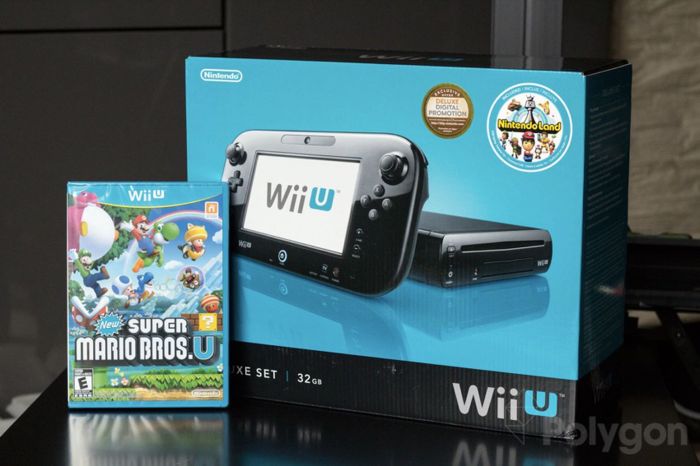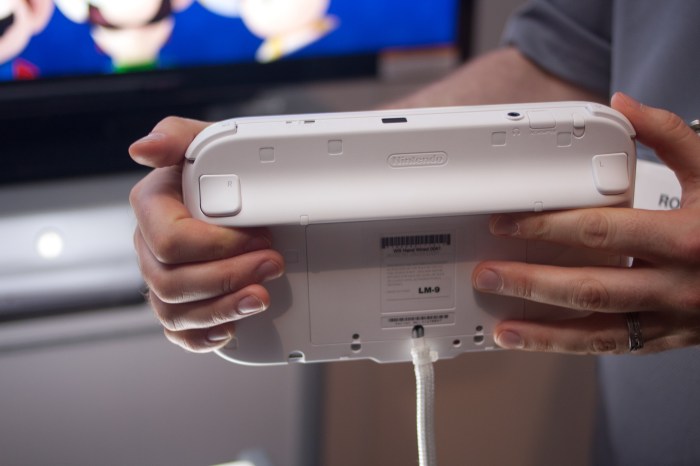The End of an Era: Nintendo’s Final Wii U Orders
The news that Nintendo has stopped taking orders for the Wii U marks the end of an era for the console, which struggled to gain traction in the market despite its innovative features. The Wii U, launched in 2012, was a bold attempt by Nintendo to push the boundaries of gaming by introducing a unique gamepad with a touchscreen and integrated camera. However, its innovative features couldn’t overcome the challenges it faced, leading to its eventual discontinuation.
The Wii U’s Lifecycle and Impact on the Gaming Industry
The Wii U’s lifecycle was marked by both innovation and struggle. The console’s unique gamepad offered a new way to interact with games, introducing a second screen experience that was a departure from traditional console gaming. The gamepad’s touchscreen allowed for intuitive controls and off-screen gameplay, offering a unique perspective for gamers. The Wii U also saw the release of critically acclaimed titles like “Super Mario 3D World,” “Splatoon,” and “The Legend of Zelda: Breath of the Wild,” showcasing the console’s potential. However, the Wii U’s limited third-party support and the perception of it as a “Wii add-on” rather than a standalone console hindered its success.
Factors Contributing to the Wii U’s Discontinuation
The Wii U’s discontinuation was the result of several factors:
- Limited Third-Party Support: Many major game developers and publishers were hesitant to support the Wii U due to its smaller install base compared to its competitors, the PlayStation 4 and Xbox One. This resulted in a limited selection of third-party titles, which further discouraged gamers from investing in the console.
- Marketing and Communication Challenges: Nintendo’s marketing strategy for the Wii U was criticized for being unclear and confusing. The console’s name, which was similar to its predecessor, the Wii, created confusion among consumers. Additionally, the marketing campaign failed to effectively communicate the unique features of the gamepad and its potential for innovative gameplay.
- High Price Point: The Wii U was initially launched at a higher price point than its competitors, making it less appealing to budget-conscious gamers. This price point further contributed to its slow adoption and limited sales.
- Lack of a Killer App: While the Wii U had a strong library of first-party titles, it lacked a “killer app” that would have resonated with a wider audience and propelled the console’s success. The Wii’s “Wii Sports” had served as a major draw for the console, but the Wii U lacked a similar game that could have captured the attention of the gaming community.
The Rise of the Nintendo Switch
The Wii U’s struggles paved the way for the Nintendo Switch, a console that reinvented Nintendo’s approach to gaming. The Switch, released in 2017, offered a unique hybrid design, seamlessly transitioning between a home console and a portable handheld device. This innovative design addressed the Wii U’s shortcomings and propelled Nintendo back to the forefront of the gaming industry.
Comparing the Wii U and the Nintendo Switch
The Wii U and the Nintendo Switch, while both Nintendo consoles, differed significantly in their design, functionality, and overall reception.
- The Wii U’s gamepad, while innovative, was criticized for its lack of power and its clunky design. The Switch’s Joy-Con controllers, on the other hand, were praised for their versatility, offering detachable controllers for portable play and a more intuitive experience.
- The Wii U’s marketing was often confusing, failing to clearly communicate its unique features. The Switch’s marketing campaign was more focused and effectively conveyed its hybrid nature and its potential for both home and portable gaming.
- The Wii U struggled to attract third-party developers, leading to a limited library of games. The Switch, with its success, has attracted a wider range of developers, resulting in a more diverse and robust game library.
Addressing the Shortcomings of the Wii U
The Switch addressed several key shortcomings of the Wii U, making it a more appealing and successful console.
- The Switch’s hybrid design solved the Wii U’s problem of being a dedicated home console. The ability to detach the Joy-Con controllers and play games on the go made the Switch a more versatile and appealing option for gamers.
- The Switch’s powerful hardware, compared to the Wii U, allowed it to run more demanding games and attract a wider range of developers. This led to a more diverse and appealing game library.
- The Switch’s marketing campaign was clear and concise, effectively communicating its unique features and its potential for both home and portable gaming. This helped to create a buzz around the console and attract a wider audience.
The Impact of the Switch’s Success on Nintendo’s Strategy
The Switch’s success has had a significant impact on Nintendo’s overall strategy.
- The Switch’s success has shown Nintendo that a hybrid console design can be successful in the market. This has led to a renewed focus on innovative and unique console designs.
- The Switch’s success has also demonstrated the importance of attracting third-party developers. Nintendo has been actively working to attract more developers to the Switch platform, resulting in a more diverse and appealing game library.
- The Switch’s success has helped to solidify Nintendo’s position as a leading player in the gaming industry. This has given Nintendo more leverage in negotiating with developers and publishers, ensuring that its consoles have access to a strong game library.
The Future of Nintendo Consoles
The Wii U’s sunset marks a new chapter for Nintendo, one where the company navigates a rapidly evolving gaming landscape. The future of Nintendo consoles hinges on its ability to adapt, innovate, and cater to a diverse player base.
The Current Gaming Landscape
The gaming industry is no longer solely dominated by traditional consoles. Mobile gaming, PC gaming, and streaming services have all carved their own niches, offering diverse experiences and accessibility. This fragmentation presents both challenges and opportunities for Nintendo. The company must find ways to differentiate its consoles while embracing the evolving trends.
Hypothetical Future Nintendo Console
Imagine a Nintendo console that seamlessly blends the best of both worlds: the immersive experiences of dedicated hardware and the accessibility of cloud gaming. This hypothetical console could feature:
* Hybrid Design: A console that can be connected to a TV for traditional gaming or transformed into a portable device for on-the-go play.
* Advanced Cloud Integration: Leverage cloud technology to enhance gameplay, enabling seamless streaming and access to a vast library of games.
* Augmented Reality (AR) Integration: Utilize AR technology to enhance games with real-world interactions and unique gameplay experiences.
* Subscription-Based Services: Offer a flexible subscription service that grants access to a library of games, similar to Xbox Game Pass and PlayStation Plus.
* Focus on Innovation: Continue to develop unique and innovative game experiences that leverage Nintendo’s strengths in family-friendly and imaginative gameplay.
Predictions for Nintendo’s Gaming Platform Strategy
Given the evolving gaming landscape, Nintendo is likely to:
* Embrace Hybridity: Continue to develop consoles that blur the lines between home and portable gaming, offering flexibility and convenience to players.
* Invest in Cloud Gaming: Explore cloud gaming solutions to expand accessibility and provide a wider range of game experiences.
* Focus on Niche Audiences: Continue to target specific demographics, such as families and casual gamers, with innovative and engaging games.
* Collaborate with Other Platforms: Explore collaborations with other platforms, such as mobile and PC, to expand reach and offer cross-platform experiences.
* Prioritize Exclusives: Continue to invest in exclusive games that leverage Nintendo’s unique strengths and appeal to its core audience.
The Lasting Impact of the Wii U: Nintendo Taking Final Wii U Orders
The Wii U, despite its commercial struggles, left an undeniable mark on the gaming landscape. Its innovative gamepad, while not universally embraced, sparked discussions about the future of controller design and player interaction. The console’s shortcomings, however, served as valuable lessons for Nintendo, shaping its future console designs and strategies.
The Wii U’s Legacy and Influence on the Gaming Industry
The Wii U’s legacy is a complex one, marked by both innovation and missed opportunities. While it wasn’t a commercial success, it introduced groundbreaking features that influenced the gaming industry.
- The GamePad: The Wii U’s most notable feature was its innovative gamepad, a touchscreen controller with a built-in screen. This allowed for unique gameplay experiences, such as off-TV play and second-screen interactions. While the GamePad wasn’t universally loved, it sparked conversations about the future of controller design and player interaction.
- Asymmetrical Gameplay: The Wii U’s GamePad enabled asymmetrical gameplay, where players could control different aspects of the game using both the TV and the GamePad. This opened up new possibilities for cooperative and competitive gameplay, as seen in games like *Nintendo Land* and *Splatoon*.
- Miiverse: Nintendo’s social platform, Miiverse, was integrated into the Wii U, allowing players to share screenshots, messages, and drawings. It fostered a sense of community and encouraged interaction among players.
Key Lessons Learned from the Wii U’s Development and Release, Nintendo taking final wii u orders
The Wii U’s commercial failure provided valuable lessons for Nintendo, shaping its future console designs and strategies.
- Marketing and Communication: The Wii U’s launch was marred by confusing marketing and communication. The console’s name, features, and target audience were not clearly defined, leading to confusion among consumers.
- Third-Party Support: The Wii U struggled to attract third-party developers, leading to a limited library of games. This was due to a combination of factors, including the console’s low sales, the perceived complexity of the GamePad, and the lack of a strong marketing push from Nintendo.
- GamePad Adoption: While the GamePad was a unique feature, it was not universally embraced by players. Many found it bulky and cumbersome, while others felt it was not essential for most games.
How the Wii U’s Experience Shaped Nintendo’s Future Console Designs
The Wii U’s failures provided valuable lessons for Nintendo, leading to significant changes in its approach to future console designs.
- Simplified Marketing: The Nintendo Switch, Nintendo’s next console, was marketed with a clear and concise message: a hybrid console that could be played both at home and on the go. This helped to avoid the confusion that plagued the Wii U’s launch.
- Improved Third-Party Support: Nintendo made a concerted effort to attract third-party developers for the Switch, offering them better tools and resources. This resulted in a more diverse and robust game library.
- Evolution of the GamePad: The Switch’s Joy-Con controllers, while not a direct replacement for the Wii U’s GamePad, incorporate some of its innovative features. They are detachable, allowing for multiple configurations, and include motion controls and HD rumble.
Nintendo taking final wii u orders – The Wii U’s journey, though ultimately cut short, serves as a valuable lesson in the ever-evolving world of gaming. It reminds us that innovation alone isn’t enough to guarantee success. The Wii U’s legacy is a testament to the importance of understanding market trends, adapting to changing consumer preferences, and crafting a compelling narrative that resonates with gamers. As we look to the future of Nintendo, the lessons learned from the Wii U’s experience will undoubtedly shape their path, ensuring that their next console surpasses its predecessor in every way.
Nintendo’s Wii U might be going out with a whimper, but at least it’s not being taken down by a flock of eagles. While the Dutch police are using their feathered friends to take down rogue drones dutch police eagles take down drones , the Wii U is simply fading into the sunset, leaving gamers to look forward to the next generation of consoles.
 Standi Techno News
Standi Techno News

